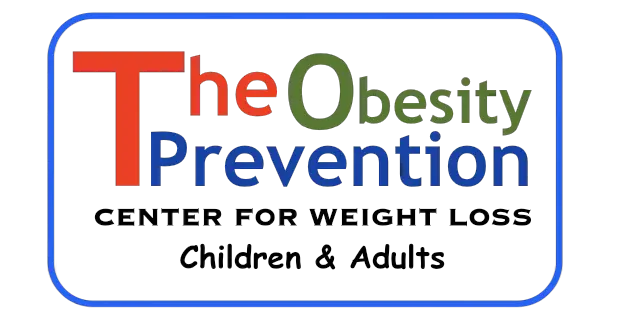Sticking to a nutritious diet is one of the core pillars of successful weight loss, yet it can be so tough to maintain healthy eating habits when life gets hectic. Between long work hours, family commitments, and jam-packed social calendars, it’s no wonder that convenience foods seem like an easy solution for getting dinner on the table. However, heavily processed convenience foods are often loaded with calories, fat, sugar, and sodium that can seriously derail weight loss efforts. This is where freezer meal prep can make all the difference!
Freezer meals are homemade dishes that are prepared, portioned, and frozen ahead of time for easy reheating later on. Having a stash of healthy freezer meals ready to defrost and eat provides a major convenience factor on busy nights, taking the temptation out of ordering takeout or heating less-than-ideal frozen entrees. Even better, when you make freezer meals yourself, you have complete control over the ingredients, nutrition, and portions, allowing you to stay on track with your weight goals. Read on to discover the most effective freezer meal strategies for streamlining your path to successful, sustainable weight loss!

The Basics of Freezer Meal Planning
Freezer meal prepping revolves around cooking large batches of recipes in advance, dividing them into individual or family-sized portions, and freezing those portions to be reheated and enjoyed at a later date. The process typically involves picking out recipes suited for freezing, preparing and cooking the chosen recipes, allowing the cooked food to cool completely, packaging the cooled food in airtight freezer-safe containers, labeling the containers with the name of the dish and date, and transferring them to the freezer.
Having a rotating stash of homemade frozen meals and snacks readily available cuts down on the urge to cave into tempting quick fix but often unhealthy options like takeout, pizza delivery, or highly processed frozen dinners on stressful nights. When you pull together a dinner from your own freezer stash, you know exactly what went into it and can rest assured it aligns with your weight loss goals.
The key to success with freezer meals lies in choosing the right recipes suited for freezing. In general, dishes that contain a good amount of moisture and have a saucy texture tend to hold up best through freezing and reheating, maintaining their flavor and appeal. Examples of freezer-friendly fare include hearty soups, stews, chilis, curries, casseroles, baked pastas with sauce, and burritos or enchiladas.
On the flip side, items with ultra-dry textures don’t always reheat well and can end up tasting unappealing. For instance, plain chicken breasts may emerge dry and stringy after freezing. Lean proteins can be incorporated into recipes or marinated to help maintain moisture. When selecting recipes, be sure to keep your nutritional priorities in mind. Focus on dishes that feature lean proteins, fiber-rich whole grains, and plenty of vegetables over those heavy in refined carbs, sugars, unhealthy fats and excess sodium.

Prepping for Success: Choosing the Right Ingredients
When it comes to preparing freezer meals that align with your weight loss diet, choosing the right ingredients is key. Certain fresh foods maintain their nutritional quality, texture and flavor through freezing better than others. Prioritizing the best frozen foods helps ensure your meals come out tasting great while providing maximum nutritional value.
For proteins, lean poultry, fish, seafood, eggs, beans and tofu freeze exceptionally well. Fattier cuts of red meat can be used occasionally in moderation. Processed meats high in sodium and saturated fat like bacon, sausage and deli meat don’t freeze as well and are less diet-friendly.
When it comes to produce, sturdy vegetables with a relatively low water content like broccoli, carrots, bell peppers and green beans hold up beautifully when frozen. More delicate veggies like lettuces and cucumbers don’t fare as well texture-wise. Quick-blanching or roasting can help tender veggies freeze better. Frozen fruits and vegetables are fantastic options, retaining nutrients through the flash-freezing process.
With grains, stick with less processed options over refined varieties whenever possible. Whole grains like brown rice, barley, farro, quinoa and oats freeze well and provide extra fiber to support satiety and weight loss. Make sure to label any grain side dishes with reheating instructions.
For optimal nutrition, low-fat or nonfat dairy is ideal. Nonfat milk, Greek yogurt and low-fat cheeses freeze nicely. Some fuller-fat cheeses can be used sparingly for flavor. Always avoid adding excessive oil, butter, cream and sodium when preparing meals. Read labels thoroughly if using any packaged ingredients like stocks, dressings or sauces.

Meal Prep Mastery: Cooking and Freezing Techniques
Proper cooking, cooling, and freezing methods help ensure your homemade freezer meals retain maximum nutritional value, flavor and texture. Whenever possible, set aside a block of time for large batch cooking multiple recipes at once rather than preparing them sequentially. This allows for more efficient use of time spent in the kitchen.
Aim to cook at least 2-3 recipes or double batches of 1-2 recipes during your meal prep session. Allow any cooked foods like soups, stews or casseroles to cool at room temperature for 30-60 minutes before transferring to the fridge to complete cooling. This rapid chilling process helps prevent potential bacteria growth. Allow cooked dishes to cool completely in the fridge before portioning out.
When freezing soup, chili or stew recipes, it’s best to underfill containers slightly to provide room for expansion during freezing. Leave at least 1/2 inch of headspace in rigid containers; fill zip-top bags to just 3/4 full. Freeze broths, stocks and tomato sauces in ice cube trays for easy use in cooking. Porous baked goods like muffins or breads freeze best when wrapped tightly in plastic first to prevent freezer burn.
When packing meals, glass and rigid plastic containers, as well as heavy-duty freezer bags, all work well. Avoid overstuffing containers, which can lead to messes when thawing. Label everything clearly with recipe name and freeze-by date using labels or masking tape. For optimal freshness and quality, new freezer meals should be frozen within 2 hours of cooking. Most homemade entrées, casseroles and soups freeze well for 2-3 months.
Building a Balanced Freezer Meal Portfolio
One of the keys to sticking with your diet through busy weeks is having a balanced, varied stash of nutritious freezer meals to choose from. Prepare a diverse lineup that includes quick breakfasts, grab-and-go lunches, family-friendly dinners and even healthy sweet and savory snacks. Having diet-conscious options readily available for every meal and snack minimizes the chances of veering off course nutritionally when hunger hits.
For speedy morning meals, options like breakfast burritos, frittatas, parfaits, chia puddings and smoothie packs are easy to defrost and eat on the go. Hearty soups, chilis, casseroles and baked pastas make for satisfying lunches. Ground turkey or veggie-packed meatloaf muffins with roasted veggies and quinoa cook up nicely. Lasagnas, enchiladas and shepherd’s pie also reheat beautifully.
For snacks, consider ready-to-blend smoothies and pancakes, hummus with veggie sticks or pita chips, energy bites, protein muffins and fresh fruit combinations. Prepare a few weekly servings of chia seeds, nuts, shredded coconut or pumpkin seeds to toss into meals for extra staying power. Having an appetizing mix of cuisines and flavors will help you look forward to enjoying your freezer finds. Rotate in 2-3 new recipes weekly when doing meal prep.

Navigating Nutritional Needs: Customizing Freezer Meals
One of the major benefits of cooking your own meals for the freezer is it allows for complete personalization based on your health goals and dietary needs. Whether you follow a structured plan like Keto, Paleo, low FODMAP or gluten-free, require allergy-friendly options or want to dial in your macros, you can easily adjust entrées accordingly.
If using any packaged products like broths, sauces or dressings, be vigilant about checking labels for potential allergens or unwanted additives. Get creative with ingredient swaps like subbing cauliflower rice for regular rice or zucchini noodles for pasta. Tweak spice blends to suit your tastes and health needs by adding ingredients like turmeric, cumin and garlic.
Consider your total daily calorie intake when portioning meals to ensure they align with your plan. For instance, ladle lower calorie vegetable soups like minestrone into smaller containers vs heartier chilis. Double up on veggie portions in recipes and cut back on starchy or fatty components as desired. Cook proteins like chicken breasts plain so you control seasonings and sauces served with them.
Prepare the components of dishes separately, keeping carb sides, veggies and proteins separate for meal assembly as needed. This allows for great flexibility whether you’re meal prepping for specialized diets, managing health conditions or honing macronutrients. The options are truly endless for adapting freezer fare to your needs!
Thawing and Enjoying: Maximizing Flavor and Nutrition
The way you thaw and reheat freezer meals impacts their flavor, texture and retention of nutrients. For best results, thaw frozen meals overnight in the fridge which helps them retain moisture and quality. If short on time, run containers under cool water to loosen contents before reheating. Avoid thawing at room temperature, which can allow bacteria growth.
Microwaving provides the fastest method for reheating but can make some textures rubbery. Oven heating with a lower temp of 300°F works well for casseroles and bakes. Place thawed meals in oven-safe dishes, cover with foil and heat through. Stirring periodically during reheating improves consistency. Adding a splash of milk or broth to overtly dry dishes helps revive them.
For an extra flavor and nutrition boost, stir in extras as desired when reheating like sautéed or roasted veggies, shredded cheese, fresh herbs, spices, lemon juice or hot chili sauce. Cooked frozen greens often benefit from a squeeze of citrus. Undercook grains like rice and quinoa slightly before freezing so they finish up during reheating. Use thawed items within 3-4 days for food safety.
In Conclusion
Implementing a routine of preparing weekly freezer meals lays the groundwork for weight loss success by always having diet-conscious meals at the ready. When you take time to batch cook nutrient-dense dishes to stock your freezer, you remove the temptation to settle for quick empty calorie fixes during busy weeks. Customizing meals to your nutritional needs and reheating them properly ensures they retain maximum quality and taste. Freezer meal prepping leads to streamlined, stress-free weight loss success!
What are you waiting for? Grab your meal planning notebook, printer-friendly recipes and freezer containers and get ready to cook your way to better health! I know you can do it. We’re cheering you on as you build this game-changing habit. Want more wholesome recipes, meal planning guides, nutrition tips and weight loss motivation? Don’t miss a beat – subscribe to our free monthly wellness newsletter using the form below! We can’t wait to send you inspiration for nourishing your body and mind on your journey toward your healthiest self. Let’s do this!
Thank you for reading this post, don't forget to subscribe to our free newsletter
!
